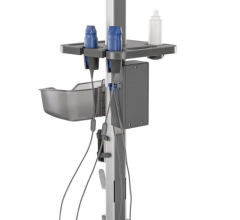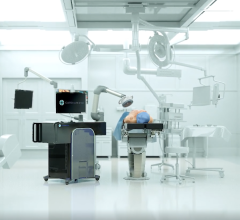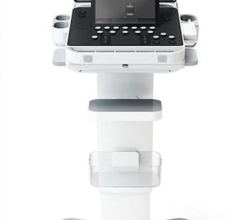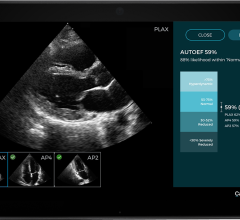
January 17, 2018 — The Society for Vascular Ultrasound (SVU), the Society for Vascular Surgery (SVS) and Medstreaming-M2S announced the development of the Vascular Quality Initiative (VQI) Vascular Ultrasound Registry. This Registry represents an expansion of the SVS VQI, which will combine noninvasive vascular ultrasound testing data with vascular treatment and outcomes data, making it possible to analyze the relationships between diagnosis and care provided to patients with vascular disease.
The Vascular Ultrasound Registry’s initial efforts will focus on collection and analysis of data associated with the diagnosis and treatment of carotid artery disease. The development of the registry and ongoing research related activities are being led by a VQI Vascular Ultrasound Registry Task Force, chaired by David Dawson, M.D., and Gregory Moneta, M.D. Groundbreaking in this registry will be the inclusion of actual ultrasound images that will make future machine analysis and learning possible from the collected registry, which currently does not exist.
It is anticipated that the registry will provide the means and an impetus to promote vascular laboratory standardization and thereby improve patient care. “Non-invasive vascular testing has evolved to the point where it is being relied upon heavily to direct patient medical management decisions”, said James Wilkinson, SVU executive director. “With the rapid growth and diversification in the number of medical specialties providing testing, there is a lack of standardization in the delivery of testing and the reporting of results. Targeted, yet broad based research will significantly contribute to standardization efforts.”
Fundamental to the VQI Vascular Ultrasound Registry is the ability to link technical data and images to the clinical data collected from the SVS VQI’s existing registries. “The addition of the VQI Vascular Ultrasound Registry, to the existing VQI registries, will further aid the VQI’s mission of improving vascular care by enhancing the data we can make available to our members. We are also pleased that this registry expands the reach of the VQI to include vascular technologists, sonographers and other professionals in the vascular laboratory setting. The VQI has long embraced a team-approach to care, with 59 percent of VQI membership coming from specialties outside of vascular surgery, including cardiology and radiology,” said Jens Eldrup-Jorgensen, M.D., medical director of the SVS Patient Safety Organization.
A key to the success of any registry is providing means for efficient data capture. The VQI Vascular Ultrasound Registry leverages the infrastructure of the pre-existing registry with linkages to ultrasound images from the vascular laboratory. “Medstreaming-M2S’s specialty-based workflow solutions, along with its clinical data management system for structured data aggregation can be used for uploading of data and images,” noted Wael Elseaidy, Medstreaming-M2S CEO. Initially, only a select number of current VQI sites will participate, but Vascular Ultrasound Registry participation is expected to be broadly available in the next phase of the program, along with an increase in registry content and scope of projects.
“Unique to the VQI Vascular Ultrasound Registry is the inclusion of an image-based registry component, which will include the actual ultrasound images acquired during patient studies. When combined with powerful analytics and potential for machine learning, we foresee opportunity to normalize ultrasound image data submitted from different sites, develop new benchmarking standards, further explore and promote utilization of all the information embedded in the images, and provide the ultrasound industry with an entirely new platform from which to conduct research and drive product development,” Elseaidy continued.
Ultimately, the Registry will provide opportunity for VQI members to improve quality and conduct additional research regarding vascular ultrasound. “The Registry will provide greater opportunity for members to participate in research, whether through contribution of data pertaining to Society sponsored research projects or their own projects utilizing Registry data, all with the overall objective of quality improvement and better patient care,” Wilkinson concluded.
For more information: www.vqi.org


 March 24, 2025
March 24, 2025 








